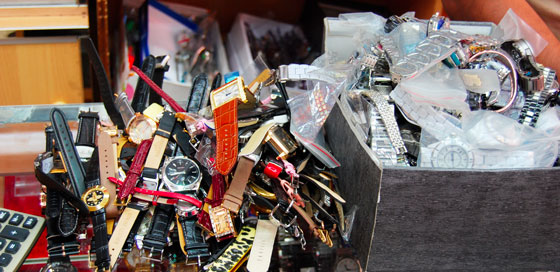
Imports of counterfeit and pirated products total nearly 500 billion dollars a year, or around 2.5% of world imports, according to a new report by the OECD (Organisation for Economic Cooperation and Development) and EUIPO (European Union Intellectual Property Office).
The report estimated the global value of imports of counterfeit goods at 461 billion dollars in 2013, with imports around the world as a whole totalling 17,900 billion. Fake goods account for up to 5% of products imported into the European Union. Most come from middle income or emerging countries, with China the leading producer.
The report’s authors analysed data from nearly half a million customs seizures worldwide between 2011 and 2013, in order to obtain the most precise estimate to date of the scale of trade in fake products at a global level. The volume they arrived at is slightly higher than the level reported in a 2008 OECD study, which estimated that counterfeit goods accounted for up to 1.9% of world imports.
«The conclusions of this new report contradict the notion that counterfeiting affects only large corporations or luxury goods manufacturers. Counterfeiters benefit from the trust we place in brands to weaken economies and imperil the lives of individuals» said the Deputy Secretary-General of the OECD, Doug Frantz.
Counterfeiting affects all types of products, from handbags and perfumes to machine parts and chemicals. While shoes are the most copied products, violations of intellectual property rights can even affect strawberries and bananas. Counterfeiting activities also produce «poor copies» which can place individuals’ lives in danger - defective car parts, medicines with harmful effects, dangerous toys, baby milk with no nutritional value and medical instruments that give false readings.
Countries whose firms were most affected by counterfeiting between 2011 and 2013 are the United States, whose trademarks and patents accounted for 20% of copies, followed by Italy with 15%, France and Switzerland each with 12%, Japan and Germany with 8%, and the United Kingdom and Luxembourg.
Postal packages are the most common method by which counterfeit products are dispatched; they represent 62% of seizures, a proportion that illustrates the growing importance of online commerce in international trade. Counterfeit products follow complex channels which route them through the world’s largest trade platforms such as Hong Kong and Singapore, and through free-trade zones, of which the United Arab Emirates is a prime example. They also transit through countries with weak governance or that are prey to high levels of organised crime, such as Afghanistan and Syria. The report shows that these commercial routes vary considerably from one year to another, with counterfeiting networks constantly finding new weaknesses to exploit.
May 12, 2016


 News
News